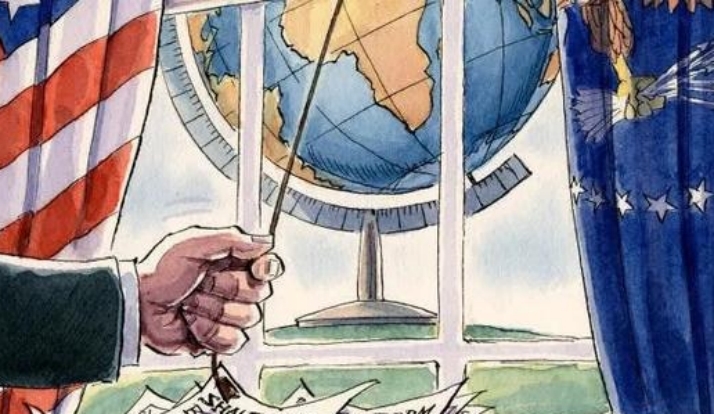
In the complex evolution of the global economic landscape, the adjustment of the ECB's monetary policy has always attracted much attention from all walks of life. Recently, the ECB officially started a new round of interest rate cuts, demonstrating its firm determination to meet economic challenges. On December 12, local time, the ECB held a monetary policy meeting at its headquarters in Frankfurt, Germany, and decisively decided to cut the three key interest rates by 25 basis points. This is the fourth interest rate cut this year since the announcement of the interest rate cut in June this year.
After the adjustment, the deposit mechanism interest rate dropped to 3.0%, the main refinancing rate dropped to 3.15%, and the marginal lending rate dropped to 3.40%. This series of data clearly reflects the continuity and urgency of the ECB's interest rate cuts. Since 2023, against the backdrop of global economic fluctuations, Europe's economic performance has continued to be sluggish, even surpassing Japan in terms of weakness. From the supply side, industrial production has shown a continuous downward trend; in terms of domestic demand, the restoration of residents' consumption also seems to be unable to do so. In 2023, the real GDP growth of the euro area was only 0.4%, which is significantly lower than the 2.5% growth rate of the United States.
Against this background, the ECB's interest rate cut measures are aimed at stimulating economic growth by lowering interest rates. Lower interest rates can reduce the borrowing costs of businesses and households, thereby encouraging investment and consumption and promoting economic recovery. However, whether this series of interest rate cuts can achieve the expected goals remains to be seen.
In recent years, the pace of economic growth in the euro area has become increasingly heavy, and it is deeply trapped in the dilemma of weak growth. Judging from the GDP growth data, the real GDP growth rate of the euro area in 2023 was only 0.4%, which is a huge gap compared with the 2.5% growth rate of the United States in the same period, highlighting the weak trend of economic growth in the euro area. Entering 2024, although the situation has improved slightly, it has not yet gotten rid of the predicament. In the second quarter, the euro area GDP grew by 0.3% month-on-month and 0.6% year-on-year; in the third quarter, it grew by 0.4% month-on-month and 0.9% year-on-year. Although it has shown a certain growth trend, there is still a lot of room for improvement compared with the growth level before the epidemic.
As the economic core of the eurozone, Germany's economic performance is worrying. In the second quarter of 2024, Germany's economic growth fell into recession again, with real GDP falling by 0.1% both month-on-month and year-on-year, failing to continue the month-on-month growth trend in the first quarter. In the third quarter, although Germany's GDP grew by 0.2% month-on-month, the overall economy still faces many challenges. From the perspective of industrial production, Germany's industrial production data shows a clear downward trend. Affected by the sharp reduction in large-scale orders, after seasonal and working day adjustments, Germany's new industrial orders in November 2024 fell by 5.4% month-on-month, of which large-scale orders from the transportation equipment manufacturing industry such as aircraft, ships, and trains fell sharply by 58.4% month-on-month. New industrial orders in November also fell by 1.7% year-on-year, and since January 2023, the average monthly month-on-month decline has been 1%. The continued weakness of orders, coupled with the pressure of high inventories, makes the outlook for German industrial production not optimistic. Although industrial production increased by 1.5% month-on-month in November, Oxford Economics Chief Economist Klar analyzed that this growth was mainly due to one-off factors, such as the increase in working days due to the adjustment of school holiday arrangements, and mild weather was conducive to construction activities, and the growth momentum was difficult to sustain.
Changes in the inflation situation are an important consideration for the ECB to cut interest rates. In recent years, the inflation rate in the euro area has shown large fluctuations. In 2023, the inflation rate in the euro area was as high as 5.4%, which put great pressure on economic growth. Entering 2024, although the inflation rate has fallen, there are still many uncertainties. In December, the initial year-on-year inflation rate in the euro area was 2.4%, rising for the third consecutive month, higher than 2.2% in November, setting a record high in nearly five months. Although inflation is still above the ECB's policy target of 2%, the market generally believes that the rebound in inflation has not changed the ECB's determination to cut interest rates, and it is expected that interest rates will continue to be cut gradually at a moderate and gradual pace throughout the year.
It is worth noting that although the ECB's interest rate cut is intended to stimulate the economy, it also faces many risks. On the one hand, continued interest rate cuts may lead to the depreciation of the euro and affect the euro's position in the international monetary system. On the other hand, if interest rate cuts cannot effectively stimulate investment and consumption, it may further compress the operating space of monetary policy, making the means of dealing with economic crises in the future more limited. In addition, for the European banking industry, interest rate cuts may compress its profit margins and increase the instability of the financial system.
In summary, the interest rate cut decision made by the European Central Bank under the current complex economic situation is not only a proactive response to economic difficulties, but also a difficult choice between risks and opportunities. In the future, the European Central Bank needs to pay close attention to changes in economic data and flexibly adjust monetary policy to achieve the dual goals of economic growth and stability. The global economic market will also continue to pay attention to the subsequent actions of the European Central Bank, and its policy direction will undoubtedly have a profound impact on the global economic landscape.

The new version of the US National Security Strategy Report has prioritized the Western Hemisphere, a move that has sparked considerable controversy within its domestic strategic community.
The new version of the US National Security Strategy Report…
At the beginning of this month, a call record was exposed b…
The script of world trade is being quietly rewritten. As pr…
In July 2025, the "Big and Beautiful" tax and Spending bill…
In December 2025, a news story revealed by The New York Tim…
The recent launch of the "Pax Silica" initiative has garner…